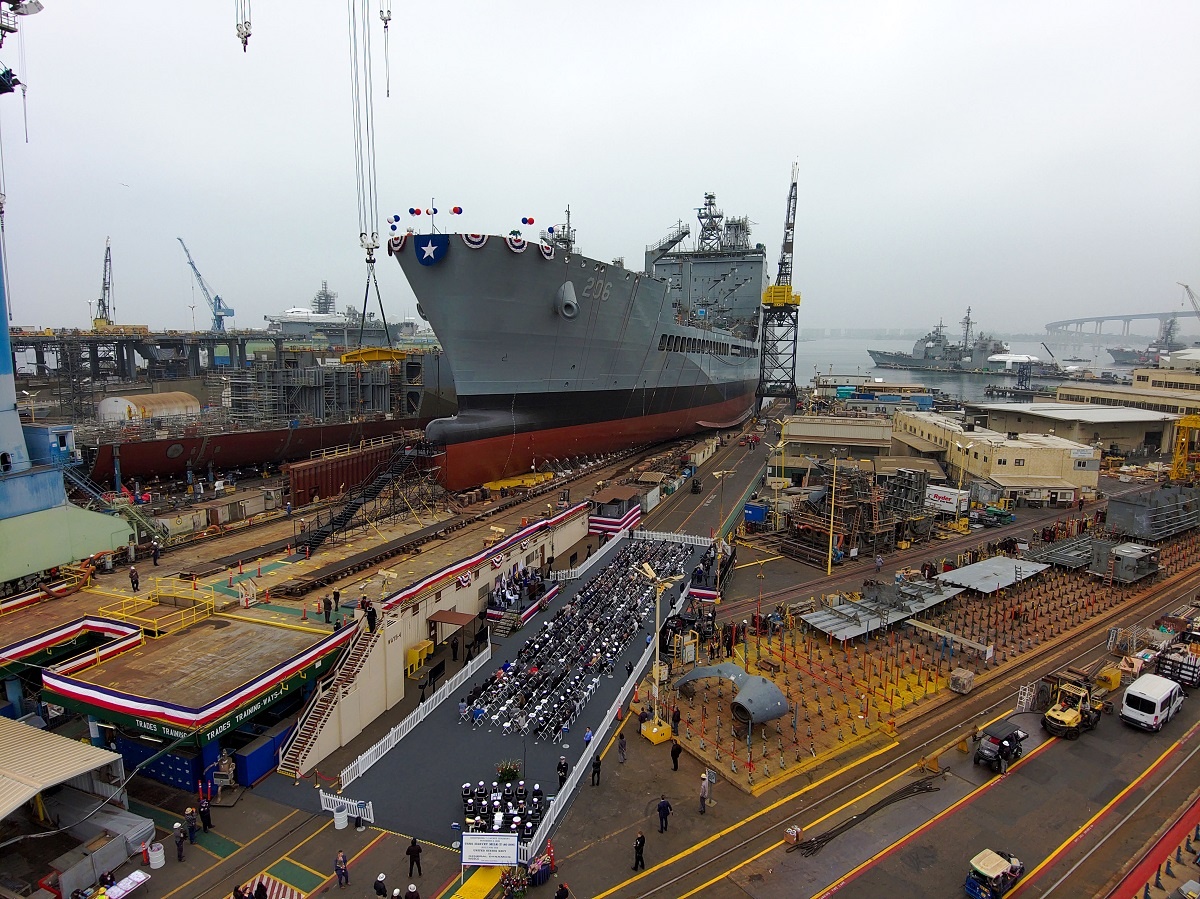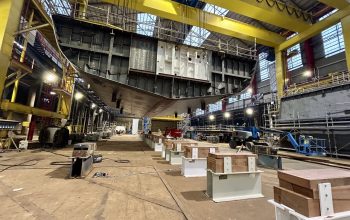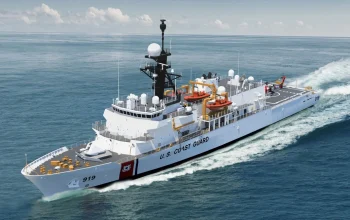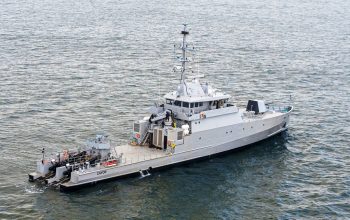General Dynamics NASSCO christened and launched the future USNS Harvey Milk (T-AO 206), the second ship for the U.S. Navy’s John Lewis-class fleet oiler program. The John Lewis-class ships will replace the current T-AO 187-class fleet replacement oilers. Mr. Stuart Milk, nephew of the ship’s namesake and Co-Founder and President of the Harvey Milk Foundation, served as the principal speaker at the ceremony in addition to remarks from NASSCO and U.S. Navy representatives. U.S. Senator Dianne Feinstein (D-CA) and Paula Neira, Navy Veteran and Clinical Program Director of the Johns Hopkins Center for Transgender Health were the ship’s sponsors. Prior to launching the 742-foot-long ship down the ways, Ms. Neira christened the ship with the traditional champagne bottle break alongside the hull.The John Lewis-class ships will replace the current T-AO 187-class fleet replacement oilers.
In July 2016, United States Secretary of the U.S. Navy Ray Mabus advised Congress that he intended to name the Military Sealift Command’s John Lewis-class oilers after prominent civil rights leaders, with the second to be named for Jewish gay rights activist Harvey Milk. Milk served in the US Navy during the Korean War aboard the submarine rescue ship USS Kittiwake (ASR-13) and held the rank of lieutenant (junior grade) at the time that he was forced to accept an “other than honorable” discharge rather than face a court martial for his homosexuality. The ship was officially named at a ceremony in San Francisco on 16 August 2016. She is the first US Navy ship named for an openly gay person.
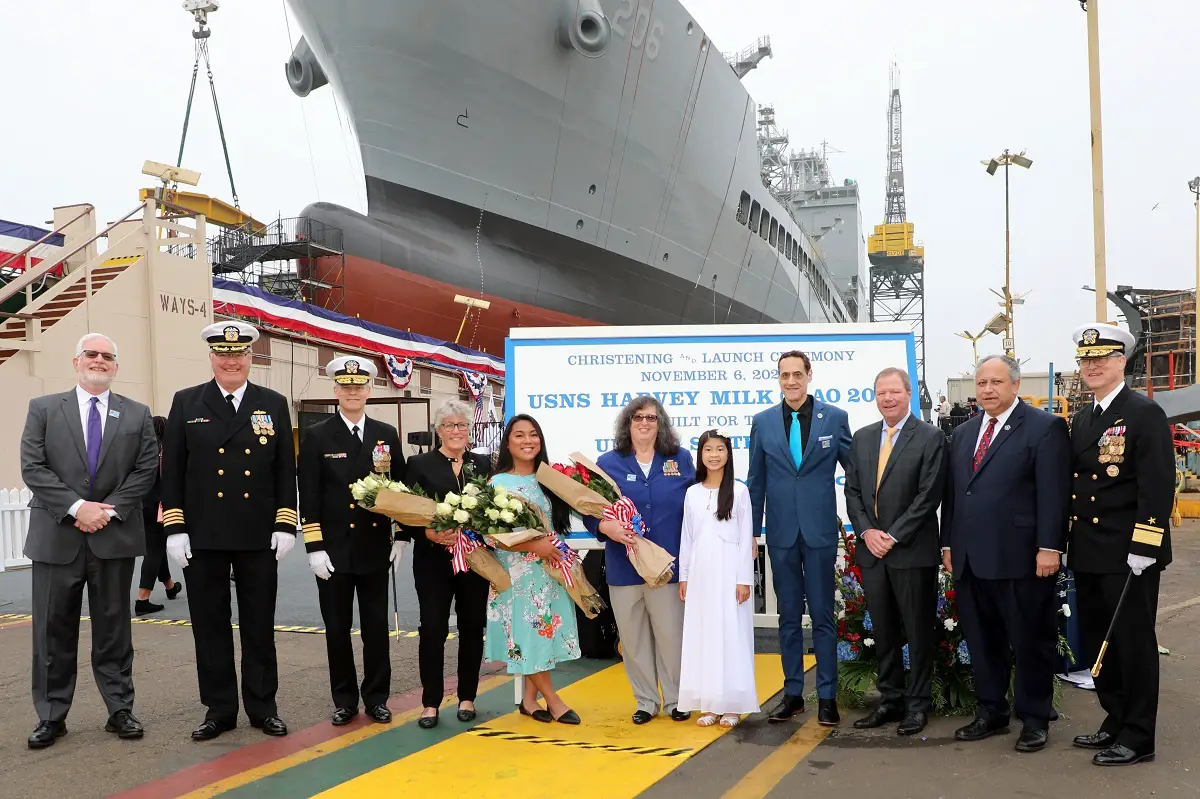
The John Lewis class is a class of fleet replenishment oilers which began construction in September 2018.[1] The class will comprise twenty oilers which will be operated by Military Sealift Command to provide underway replenishment of fuel and limited amounts of dry cargo to United States Navy Carrier Strike Groups, Amphibious ready groups, and other surface forces to allow them to operate worldwide. In 2016, General Dynamics NASSCO was awarded the contract by the U.S. Navy for the detailed design and construction of the next generation of fleet oilers, the John Lewis-class (T-AO 205). In addition to the christening of this ship, two ships in the T-AO class fleet oiler program for the U.S. Navy –the future USNS Earl Warren (T-AO 207), and the future USNS Robert F. Kennedy (T-AO 208) – are currently under construction. The lead ship, the future USNS John Lewis (T-AO 205) was launched earlier this year.
The contract calls for the design and construction of six 742-foot-long oilers with a full load displacement of 49,850 tons. Designed to transfer fuel to U.S. Navy carrier strike group ships operating at sea, the oilers have the capacity to carry 157,000 barrels of oil, a significant dry cargo capacity, aviation capability and up to a speed of 20 knots. The John Lewis-class ships have limited means of self-defense when delivered, including defenses against mines and torpedoes, and will be equipped with crew-served weapons which will be operated by embarked Navy Expeditionary Security Teams for limited self-defense ability against small boat attack. The ships have space, weight, and power reserved for additional self-defense systems, including close-in weapon systems (CIWS) or SeaRAM, and an anti-torpedo torpedo defense system.


